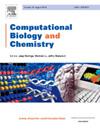Multi-computational screening identifies homovanillic acid as a potential SAP5 inhibitor against Candida albicans biofilms
IF 2.6
4区 生物学
Q2 BIOLOGY
引用次数: 0
Abstract
This work aims to find inhibitors of SAP5, a virulence factor in Candida albicans polymicrobial biofilms. The methodology included docking simulations, MMGBSA calculations, and molecular dynamics simulations. Of the 107 phenolic acids retrieved from PubChem, 20 passed ADMET screening. The research finds homovanillic acid to be a possible SAP5 inhibitor, with a binding energy of −19.92 kcal/mol as shown by molecular docking and MMGBSA analysis. The compound showed favorable ADMET properties, indicating low toxicity and high drug-likeness. Molecular dynamics simulations over 100 nanoseconds confirmed stable protein-ligand interactions. These findings suggest homovanillic acid's potential in treating AMR-associated biofilms and establish a foundation for experimental validation. The study demonstrates how computational methods can accelerate the discovery of novel antifungal medicines targeting polymicrobial infections.
多计算筛选鉴定纯香草酸作为潜在的SAP5抑制剂对抗白色念珠菌生物膜
本研究旨在寻找白色念珠菌多微生物生物膜中毒力因子SAP5的抑制剂。方法包括对接模拟、MMGBSA计算和分子动力学模拟。在PubChem检索到的107种酚酸中,有20种通过了ADMET筛选。本研究发现同型香草酸可能是SAP5抑制剂,通过分子对接和MMGBSA分析发现其结合能为−19.92 kcal/mol。该化合物具有良好的ADMET性质,具有低毒性和高药物相似性。超过100纳秒的分子动力学模拟证实了稳定的蛋白质-配体相互作用。这些发现表明同香草酸在治疗抗菌素耐药性相关生物膜方面具有潜力,并为实验验证奠定了基础。该研究证明了计算方法如何能够加速发现针对多种微生物感染的新型抗真菌药物。
本文章由计算机程序翻译,如有差异,请以英文原文为准。
求助全文
约1分钟内获得全文
求助全文
来源期刊

Computational Biology and Chemistry
生物-计算机:跨学科应用
CiteScore
6.10
自引率
3.20%
发文量
142
审稿时长
24 days
期刊介绍:
Computational Biology and Chemistry publishes original research papers and review articles in all areas of computational life sciences. High quality research contributions with a major computational component in the areas of nucleic acid and protein sequence research, molecular evolution, molecular genetics (functional genomics and proteomics), theory and practice of either biology-specific or chemical-biology-specific modeling, and structural biology of nucleic acids and proteins are particularly welcome. Exceptionally high quality research work in bioinformatics, systems biology, ecology, computational pharmacology, metabolism, biomedical engineering, epidemiology, and statistical genetics will also be considered.
Given their inherent uncertainty, protein modeling and molecular docking studies should be thoroughly validated. In the absence of experimental results for validation, the use of molecular dynamics simulations along with detailed free energy calculations, for example, should be used as complementary techniques to support the major conclusions. Submissions of premature modeling exercises without additional biological insights will not be considered.
Review articles will generally be commissioned by the editors and should not be submitted to the journal without explicit invitation. However prospective authors are welcome to send a brief (one to three pages) synopsis, which will be evaluated by the editors.
 求助内容:
求助内容: 应助结果提醒方式:
应助结果提醒方式:


